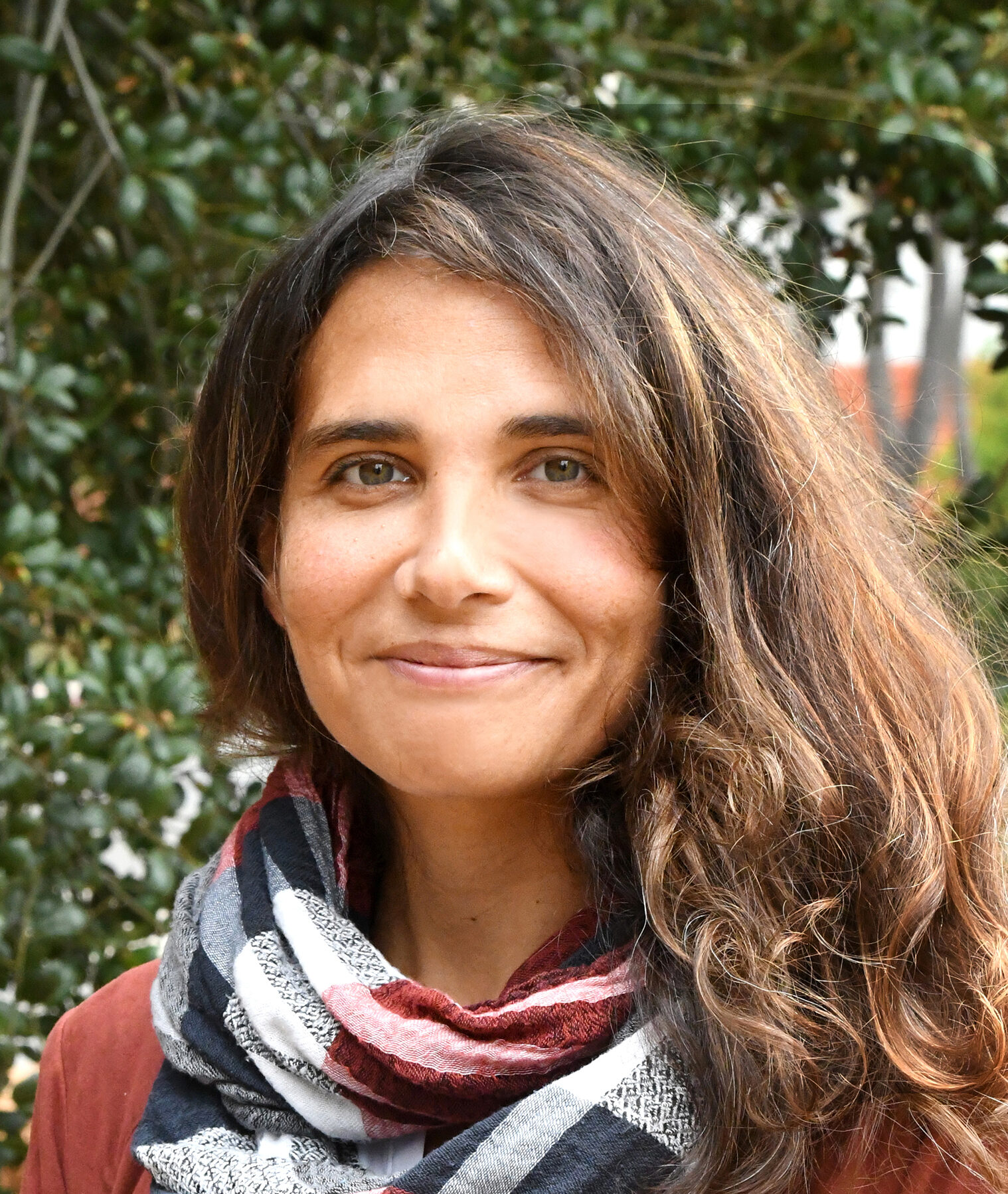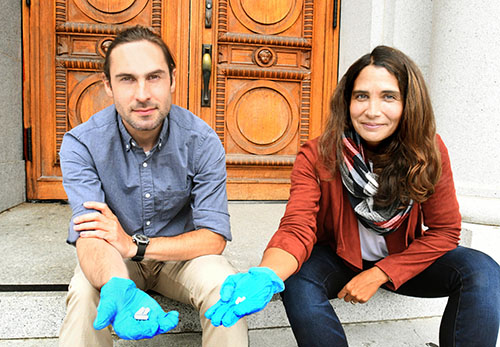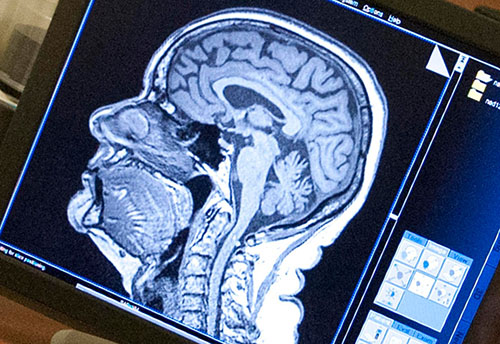
Rebecca Abergel
Nuclear EngineeringRebecca Abergel is an Associate Professor in the Departments of Nuclear Engineering and Chemistry.
Project Description
Therapeutic Interventions for Post-MRI Gadolinium Toxicity
Gadolinium-based contrast agents have been widely used in clinical magnetic resonance imaging – MRI – studies. However, despite their initial safety reputation, serious toxicity issues associated with the use of these agents have emerged in the last several years, with studies demonstrating the release of gadolinium (Gd) and subsequent deposition in bone tissue and in the brain in patients with normal renal function and intact blood-brain barriers. The only practical therapy to reduce the health consequences of gadolinium deposition is treatment with chelating agents that form excretable complexes, although gadolinium, like other heavy metals, is among the most intractable elements to decorporate. Initially driven by the civilian need for post-exposure medical countermeasures against nuclear threats, Rebecca Abergel’s group has pursued the development of small molecular chelators as therapeutics for heavy element decontamination. The lead investigational drug identified in this program will be further developed into a gadolinium removal product, which could be provided as a post-MRI therapeutic or just bundled with contrast agent administration shortly after the MRI procedure. A comprehensive and detailed assessment of past and future patients having received contrast agents will also be conducted to identify clinical and demographic factors that may predispose individuals to Gd retention and/or the onset of related symptoms.
Rebecca Abergel’s Story
The first use of MRI to scan a patient’s body was in 1977. Today, more than 40 million MRI scans are carried out every year in the U.S. In about one out of three, patients get an infusion containing the metal gadolinium as a contrast agent to improve imaging.
But over the last 10 to 15 years, physicians have increasingly reported that contrast MRIs sometimes lead to potentially life-threatening complications, particularly in patients with certain types of kidney disease. The FDA issued a warning against contrast MRIs for patients with kidney disease.
An intense research effort has been underway to develop drugs that can help rid the body of gadolinium after an MRI exam.

Rebecca Abergel, PhD, associate professor of nuclear engineering, has studied the chemical biology of metals since she was a PhD student at Berkeley. Her research focuses on organic molecules that can sequester and eliminate metals in the body, a chemical process known as chelation.
With her Bakar Fellows support she is evaluating the effectiveness of a chelating drug she has developed to rapidly remove gadolinium from the body. She is also launching a study to figure out if gadolinium poses a greater risk to certain populations.
Abergel discusses her research on the chelating compound, its clinical application and its commercial potential.
Q. First off, what is gadolinium?
A. It is a relatively dense rare-earth element, known as a heavy metal. Some metals, like iron and zinc, are essential nutrients. Gadolinium is a constituent of some minerals, but isn’t found in the body. Its physico-chemical properties make it a particularly good element for contrast imaging, and it’s the key component of contrast agents most often used in MRIs. In the U.S. there are about 15 million contrast MRIs a year.
Q. What are its potential risks?
A. Gadolinium-based contrast agents are critical to image tumors, blood supply to organs, severe inflammation and many other conditions. So, they can be very important in diagnosis. Most patients can excrete it rapidly and it has no side effects. But gadolinium can accumulate in brain and bone tissue. Some patients complain of brain fog or some joint pain after the MRI exam. There are many studies coming out right now trying to understand what the mechanisms are.
Patients with poor kidney function are particularly bad at eliminating gadolinium after an MRI exam. They can develop severe inflammation and scarring of connective tissue, called nephrogenic systemic fibrosis. It can be fatal.
Q. How does chelating work to protect the body from harmful metals?
A. A chelating molecule seeks out and wraps itself around the target metal so that it forms a new complex that can’t be absorbed by tissues and can be eliminated from the body. The chelator needs to be selective enough that the metal atoms have a stronger affinity for it than to other biological molecules naturally occurring in the body. But its ability to grab onto metals can’t be so strong that it risks removing metals in the body essential for health, like iron and zinc.
Q. What does your Bakar Fellows study involve?

A. It’s really part of a long-term project. I’ve been studying chelation of metals since graduate school. When I started, I was focused on iron in the body. After 9/11 the U.S. Health and Human Services became very concerned about developing drugs to prevent radioactive elements from being absorbed in the body in the event of a nuclear attack. It turns out that the kind of molecules I was working on are very good at chelating heavy metals like plutonium and uranium.
Over the past 10 years, we’ve developed a chelating agent that has been safe and very effective at removing gadolinium in animal models. We’ll focus on tweaking the dosing to assure it works really well as a potential drug for patients. In parallel, we’re collaborating with clinicians at SRI International to begin a phase 1 clinical safety study to assure it is safe for patients.
We’re also carrying out a detailed assessment from clinical records to see if certain demographics are more vulnerable to gadolinium toxicity. That will be critical to target the drug to the most at risk patients.
Q. How big a market might there be for this chelating compound?
A. Oh, it could be a very large market — hundreds of millions of dollars. If the drug is used for all contrast MRIs, that’s more than 10 million scans a year. If it were only used for people with kidney disease, that would still be a huge market. There are more than 30 million people in the U.S. with kidney disease. There are also other potential market opportunities for populations intoxicated with other metals such as lead or other rare-earth elements, which are becoming ubiquitous in today’s technologies and need to be mined and recycled in large quantities.
Q. Will you be involved in the commercialization?
A. We’ve co-founded a small company, HOPO Therapeutics. The company will be responsible for future clinical trials involving contaminated patients and for the manufacturing and marketing of the drug product.